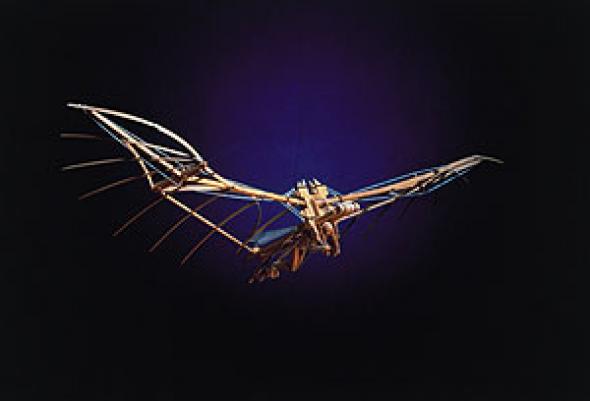Leonardo and Renaissance Engineers
Leonardo, that father of invention, loved screwing screws. Circular worm screws, endless screws and those inverted screws whose toggle handles drive things apart. He loved to crank and turn arm swings into other movement shapes — linear ups and downs accomplished through rotary turns, transmissions and conversions — or to turn hula-hooping circles into gyrating sashays in his ‘alternate motion machine’. His ‘Screw Jack’ likes hoisting heavy objects using ingenious friction-reducing ball bearings to drive the courteous gestures of an armoured knight-of-a-first-ever robot.
These Italian Renaissance machines are inhabited with figures: a blackened metal lid in the shape of a moor’s head (Blowing Moor) sits atop a vessel of water boiled by (f)ires contained within, the steam hissing out of pursed lips to wind a paddle wheel; and there are elaborate mechanisms for lifting gigantic columns operated ‘by hand’ and straining shanks. Didactic panels also assure us of Leonardo’s faithfulness to analogies through which observable Universal Laws of Nature integrated anatomy, machines, buildings, ships and earthly elements in a metaphoric and prosthetic world of joints-as-levers, muscles-as-ropes, hearts-as-furnaces and whirlwinds-as-screws.
Leonardo’s embodied ways (there’s hot gossip that the enigmatic Mona Lisa is him trannied-up) precede Cartesian disembodied knowledge projects by about 150 years, yet consolidate the turn from Medieval ears to Renaissance eyes, and anticipate some now-familiar philosophical language (assemblages, war machines and others) and bio-tech visions.
This exhibition argues that Leonardo wasn’t the solo genius he is commonly held to be, but an inheritor of material-religious ways of being, thinking and working. The icing on this Renaissance cake — this sweet Florentine tribute to that Christian god who gazes down upon the piercing point of the Duomo’s breasty dome (not the open eye of the pantheon’s oculus through which many suns shine and rains weep) — is his flying machine which couldn’t fly. His angel, whose wingspan turns the U shape of the exhibition into a circling O, peers down over an enticing display case of facsimiles of Renaissance artist-engineer-architect-author’s sketchbooks, in which Leonardo’s drawings of ‘Optics and Observable Universes’ share his characteristic vocabulary of shapes (spirals, converging rays, circles).
Across the street from the Science Museum, in niches in the walls of the Victoria & Albert Museum, there are elaborate columns ringed with bands of circling figures: on the bottom, grotty smudged shank-straining figures toil endlessly to the left; above them, a spray of branches; members of a Royal Court glide higher to the right; then more branches and then — a host of peering, sashaying angels.
Margot Leigh Butler <margotleighbutler@hotmail.com>
Leonardo and Renaissance Engineers, 24th April 2000 at the Science Museumwww.sciencemuseum.org.uk
Mute Books Orders
For Mute Books distribution contact Anagram Books
contact@anagrambooks.com
For online purchases visit anagrambooks.com








